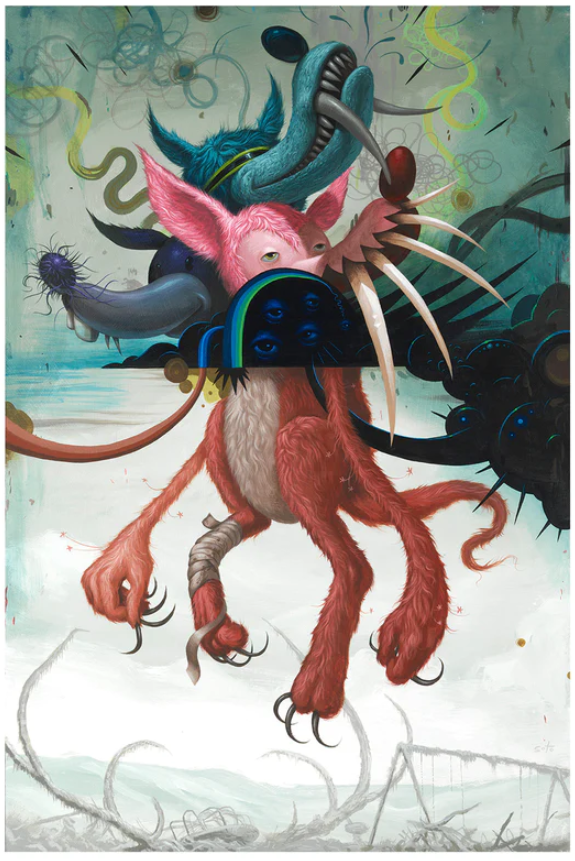
Tribal Druid & Native

Jeff Soto Broken Lithograph Print by Jeff Soto
Broken Lithograph Print by Jeff Soto Hand-Pulled Print on 80# Patina Matte Fine Art Paper Limited Edition Graffiti Street Pop Artwork. 2010 Signed & Numbered Limited Edition of 450 Artwork Size 21.88x30 Jeff Soto's "Broken" Lithograph: A Tapestry of Street Pop Art and Surrealism Jeff Soto's "Broken" lithograph is a masterful amalgamation of graffiti's raw spontaneity and the vivid, dream-like quality of pop art, presenting a unique tableau that captures the imagination. This hand-pulled print on 80# Patina Matte Fine Art Paper, released in a limited edition of 450 in 2010, is a testament to Soto's prowess in translating the essence of street art onto a more enduring medium. Each piece, sized at 21.88x30 inches, is meticulously signed and numbered, emphasizing its exclusivity and the artist's personal touch. Soto's work is renowned for its intricate detail, and "Broken" is no exception, with its layered imagery and textured visuals that invite viewers to delve into a narrative as sprawling and complex as graffiti itself. "Broken" is not just an artwork; it is a narrative piece that encapsulates the multifaceted nature of Street Pop Art and Graffiti Artwork. The fantastical creature at the center of the composition, with its vibrant pink hue and juxtaposition of animalistic traits, is a visual anchor that draws the eye and ignites curiosity. This creature, existing in a world that defies conventional reality, symbolizes the freedom of expression inherent in street art. This freedom allows for a fusion of the real and the surreal, giving rise to a new realm where the rules of traditional art are bent and reimagined. The Cultural Impact of Jeff Soto's "Broken" in the Art World Jeff Soto's "Broken" cultural impact extends beyond its aesthetic appeal, speaking to the heart of the street art movement's influence on contemporary art. The piece embodies the rebellious spirit of graffiti, with its disregard for boundaries and its challenge to the status quo. In bringing such a piece to the realm of fine art prints, Soto demonstrates the evolving perception of graffiti as a legitimate and impactful form of artistic expression. The limited edition nature of "Broken" mirrors the transient nature of street murals, often at the mercy of time and urban development, adding a sense of preciousness to their ownership. Soto's "Broken" celebrates the creative spirit that drives the street pop art movement. It bridges the often underground world of graffiti and the established art community, showcasing the potential for street-inspired visuals to resonate within gallery spaces. The print's complexity, with its swirling colors and forms, echoes the layered textures and meanings often found in street murals, inviting a deeper engagement and interpretation from its audience. Jeff Soto's "Broken" lithograph print is a vibrant homage to the transformative power of street pop art and graffiti. As a limited edition work, it captures the essence of a movement that continues to challenge and redefine the boundaries of artistic expression. Each signed and numbered print stands as a testament to the artist's vision, a piece of a larger narrative that celebrates the union of street culture and fine art. Much like the street art inspired by, it is a narrative that continues to evolve and influence long after the paint has dried.
$190.00


